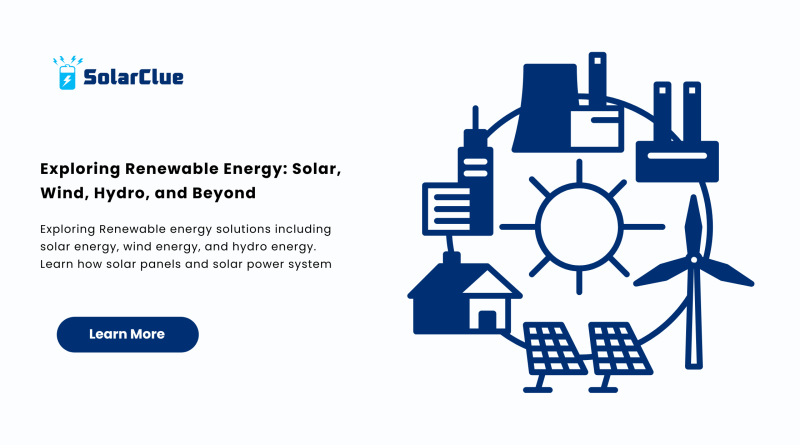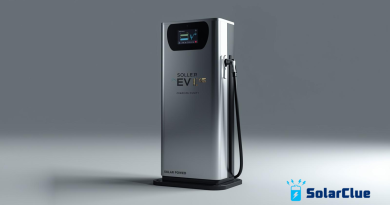Exploring Renewable Energy: Solar, Wind, Hydro, and Beyond
Exploring Renewable Energy: As the world shifts toward sustainability, renewable energy has taken center stage. With rising concerns about climate change and fossil fuel depletion, resources like solar energy, wind energy, and hydro energy have become crucial alternatives. In this comprehensive guide, we’ll explore each source, its benefits, and how you can integrate it into your life.
Table of Contents
- 1 What Is Renewable Energy?
- 2 Solar Energy: Power from the Sun
- 3 Wind Energy: Harnessing Air Currents
- 4 Hydro Energy: The Power of Flowing Water
- 5 Comparing Solar, Wind, and Hydro Energy
- 6 Why Choose Solar Power Today?
- 7 Government Incentives and Support
- 8 How to Get Started with Renewable Energy
- 9 Future of Renewable Energy
- 10 Conclusion
- 11 FAQs
What Is Renewable Energy?
Renewable energy is energy generated from sources that are naturally replenished. Unlike fossil fuels, these sources do not deplete over time. The most common types include solar energy, wind energy, and hydro energy, among others.
Solar Energy: Power from the Sun
How Solar Power Works
Solar energy harnesses sunlight using solar panels, converting it into electricity via photovoltaic (PV) cells. The electricity can power homes, businesses, and even entire communities.
Benefits of Solar Energy
- Environmentally friendly and emission-free
- Reduces electricity bills significantly
- Increases property value
- Supports grid independence
Components of a Solar Power System
A complete solar power system includes:
- Solar panels
- Charge controllers
- Inverters
- Batteries (for off-grid setups)
Visit SolarClue.com for affordable, high-efficiency solar power systems suited to your needs.
Wind Energy: Harnessing Air Currents
How Wind Energy Works
Wind energy uses large turbines placed in open fields or offshore to capture kinetic energy from wind and convert it into electricity.
Advantages of Wind Energy
- No emissions or pollution
- Low operational costs
- Scalable from residential to industrial
Limitations of Wind Energy
- Inconsistent availability depending on location
- Visual and noise impacts in populated areas
Hydro Energy: The Power of Flowing Water
How Hydro Energy Is Generated
Hydro energy, or hydropower, is generated by capturing the energy of moving water—usually from dams or flowing rivers—to turn turbines.
Benefits of Hydro Energy
- Highly efficient and reliable
- Consistent energy production
- Can store energy for peak usage
Challenges with Hydro Energy
- Environmental impact on aquatic ecosystems
- High upfront construction costs
Comparing Solar, Wind, and Hydro Energy
Efficiency and Availability
- Solar energy is best in sunny regions.
- Wind energy suits coastal and high-altitude areas.
- Hydro energy requires proximity to rivers or water bodies.
Installation and Maintenance
- Solar panels are easy to install on rooftops.
- Wind turbines need open space and higher maintenance.
- Hydro systems are durable but complex to set up.
Scalability and Flexibility
- Solar power systems can scale from small homes to large farms.
- Wind and hydro are more site-dependent.
Why Choose Solar Power Today?
With technological advances and cost reductions, solar energy is now more accessible than ever. The ease of installing solar panels and the wide range of solar power systems make it ideal for residential and commercial use.
Explore expert resources at blog.solarclue.com to find the right system for your home.
Government Incentives and Support
Many governments offer tax credits, rebates, and subsidies to encourage renewable energy adoption. India, for example, provides financial support for rooftop solar panel installations and community-based solar power systems.
How to Get Started with Renewable Energy
Step 1: Assess Your Energy Needs
Calculate your average monthly electricity consumption.
Step 2: Evaluate Site Suitability
Check your location for sun exposure, wind flow, or water availability.
Step 3: Choose Your System
Consult professionals to decide between solar, wind, or hydro energy systems.
Step 4: Installation and Monitoring
Ensure proper installation by certified technicians and monitor performance regularly.
Future of Renewable Energy
Innovation and Research
Breakthroughs in energy storage, AI for smart grids, and new materials continue to enhance efficiency and reduce costs.
Community and Global Impact
Large-scale solar power farms and microgrids are empowering rural and underserved communities.
Conclusion
Exploring Renewable Energy, whether you’re powering a single home or an entire town, renewable energy offers a sustainable path forward. From solar energy to wind energy and hydro energy, these solutions are not just future possibilities—they’re today’s realities. Interested in transforming your energy use? Visit SolarClue.com and find out how easy it is to make the switch to clean, green energy.
FAQs
1. Which renewable energy source is best for homes?
Solar energy is often the most practical due to easy installation and low maintenance.
2. Can I combine different renewable energy sources?
Yes, hybrid systems combining solar, wind, and even hydro energy are possible.
3. What’s the average lifespan of a solar panel?
Most solar panels last 25–30 years with proper care.
4. Are there any government subsidies for installing solar panels?
Yes, many regions offer financial support for solar power system adoption.
5. How do I maintain a solar power system?
Regular cleaning, checking for shading, and monitoring output are key steps.
Ready to make the switch to renewable energy? Your journey starts now—check out blog.solarclue.com for deeper insights, real stories, and expert guidance!




